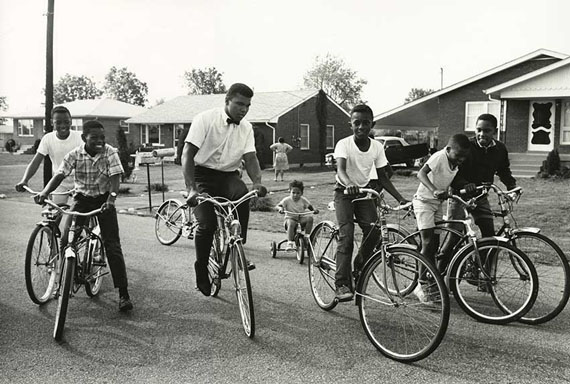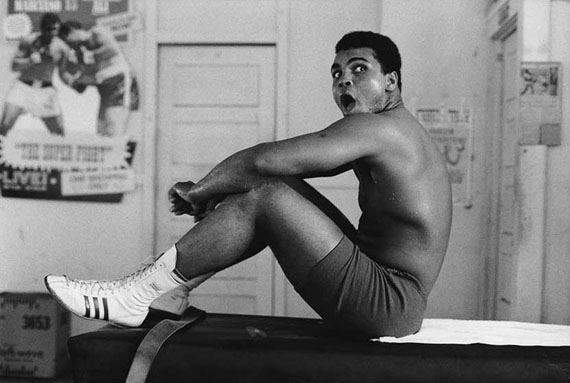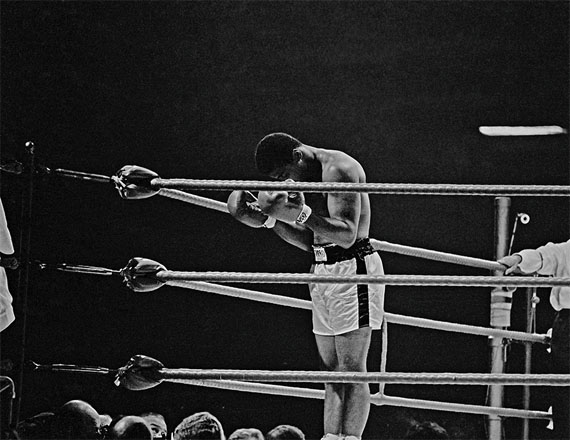
NOW YOU SEE ME!
MUHAMMAD ALI (1942-2016)
Eric Bachmann » Carl Fischer » Thomas Hoepker » Marvin E. Newman » Gordon Parks » Steve Schapiro » Flip Schulke »
Exhibition: 24 May – 7 Jul 2018
Thu 24 May 18:00 - 21:00

BILDHALLE
Stauffacherquai 56
8004 Zürich
+41 (0)44-5520918
info@bildhalle.ch
www.bildhalle.ch
Tue-Fri 12-18:30, Sat 11-16
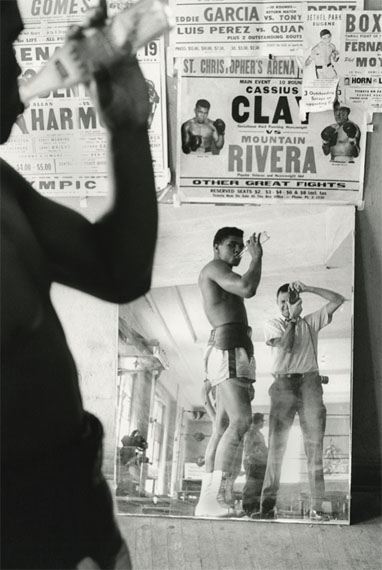
Edition 4/10, Archival Pigment Print, 48 x 33 cm
NOW YOU SEE ME!
MUHAMMAD ALI (1942-2016)
Photographs by Thomas Hoepker, Gordon Parks, Marvin Newman, Flip Schulke, Steve Schapiro, Carl Fischer and Eric Bachmann
Exhibition: 24 May – 7 July, 2018
Opening: 24 May, 6–9pm
Thomas Hoepker and Eric Bachmann will be present.
The group exhibition "Now You See Me" at Bildhalle, curated by Mirjam Cavegn and Daniel Blochwitz, marks the second anniversary of Muhammad Ali’s death and—in a homage to him and his life—brings together works by a number of exceptional photographers: Thomas Hoepker (*1936, Germany), Gordon Parks (1912-2006, United States), Steve Shapiro (*1934, American), Marvin Newman (*1927, United States), Flip Schulke (1930-2008, United States), Carl Fischer (*1924, United States) and Eric Bachmann (*1940, Switzerland).
It’s a boxer’s life seen through multiple lenses, which in turn made this great athlete most human. There are photographs that show a fighting, loving, agitating, laughing, praying, caring, posing and playing Muhammad Ali. Some of these images have become icons of pop culture while others depict Ali in a rather unexpected light.
Before his 1974 World Heavyweight Championship match against George Foreman in Kinshasa (Congo), Muhammad Ali famously rhymed, "Float like a butterfly, sting like a bee. His hands can't hit what his eyes can't see. Now you see me, now you don't. George thinks he will, but I know he won’t." Ali challenged and teased his opponent Foreman with these words, but he also backed them up with a tremendous and smart fight - which, some people claim, was the greatest boxing match ever.
However, given the historic situation of African Americans in the United States, the excerpted line "Now you see me", which lends the exhibition its title, also marks Ali’s courageous stand against a discriminatory reality. For a people and their plight often rendered invisible, a Muhammad Ali in the spotlight echoed the Civil Rights call “I Am a Man!”. His athletic ability, charisma and perseverance earned him fame, which he used to shine a light on social and political wrongs. He assumed it as his responsibility to fight prejudice, bigotry and war. Ali clearly understood, in an attention economy, pointed cameras mean power. So, he began performing outside the boxing ring as well. He performed for the cameras. Now you see me!
A good number of photographers, many of them united in this exhibition, recognized and utilized Ali’s awareness of the camera. Some of them sympathized with their chosen subject while others, like Gordon Parks, were as close to the cause of racial justice and equality as Muhammad Ali himself. Whether staged or in a snatched moment, Ali seems always comfortable in front of the camera. Even Flip Schulke’s famous underwater image shows the non-swimmer Ali at ease, assuming a boxing pose on the bottom of the pool.
Thomas Hoepker, who will join us for the opening of the exhibition, produced one of the largest selections of images on display here and thus most closely narrates through the exhibition. While accompanying Ali on many trips across the globe, the two men eventually became close friends. Hoepker’s often intimate photographs of Muhammad Ali show what George Foreman later describes in an interview (2003): "He’s the greatest man I’ve ever known. Not greatest boxer - that’s too small for him. He had a gift. He’s not 'pretty', he’s beautiful. Everything America should be, Muhammad Ali is." But please visit the exhibition and see for yourself.
�
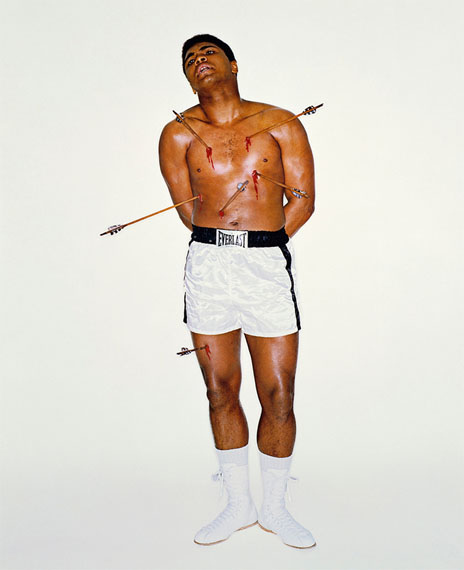
NOW YOU SEE ME!
MUHAMMAD ALI (1942-2016)
Fotografien von Thomas Hoepker, Gordon Parks, Marvin Newman, Flip Schulke, Steve Schapiro, Carl Fischer und Eric Bachmann
Die Ausstellung: 24. Mai bis 7. Juli 2018
Vernissage: Donnerstag 24. Mai, 18-21 Uhr
Thomas Hoepker und Eric Bachmann sind anwesend.
Die von Daniel Blochwitz und Mirjam Cavegn kuratierte Ausstellung markiert den zweiten Todestag des Boxers und vereinigt in einer Hommage an Muhammad Ali und sein Leben eine Auswahl von Arbeiten bekannter Fotografen: Thomas Hoepker, Gordon Parks, Steve Schapiro, Marvin Newman, Flip Schulke, Carl Fischer und Eric Bachmann. Es ist das Leben eines Boxers, das durch verschiedene Sucher betrachtet und festgehalten wurde. So gibt es Fotografien des kämpfenden, liebenden, lachenden, betenden, sorgenden, posierenden und spielenden Muhammad Ali. Einige dieser Bilder sind zu Ikonen der Popkultur geworden, während uns andere Ali in einem unerwarteten Licht zeigen.
Es ist das Leben des eines Boxers, dass durch verschiedene Sucher betrachtet und festgehalten wurde. So gibt es Fotografien des kämpfenden, liebenden, lachenden, erregten, betenden, sorgenden, posierenden und spielenden Muhammad Ali. Einige dieser Bilder sind zu Ikonen der Popkultur geworden, während uns andere Ali in einem unerwarteten Licht zeigen.
Vor seinem Titelkampf gegen Georg Foreman 1974 in Kinshasa reimte Muhammad Ali bekannterweise "Float like a butterfly, sting like a bee. His hands can't hit what his eyes can't see. Now you see me, now you don't. George thinks he will, but I know he won't." Ali forderte mit diesen Worten seinen Gegner witzelnd heraus, liess seinem Spruch aber auch einen der grössten Boxkämpfe der Geschichte folgen.
Darüber hinaus steht die gekürzte Zeile "Now you see me", die der Ausstellung den Titel verleiht, aber auch für Alis mutigen Kampf gegen eine diskriminierende Realität, die die historische Stellung der Afroamerikaner in den USA markiert. Für die gesellschaftlich oft unsichtbare schwarze Bevölkerung und ihre Not war ein im Rampenlicht stehender Muhammad Ali fast gleichbedeutend mit dem Slogan der Bürgerrechtsbewegung «I Am a Man!». Sein sportliches Talent, Charisma und seine Beharrlichkeit verliehen ihm einen Ruhm, welchen er dann nutzte, ein Licht auf soziales und politisches Unrecht zu werfen. Er verstand, dass auf ihn gerichtete Kameras auch Macht bedeuteten. Und so begann er, auch ausserhalb des Boxrings bewusst aufzutreten und für die Kameras seine Rolle zu spielen. Now you see me!�
